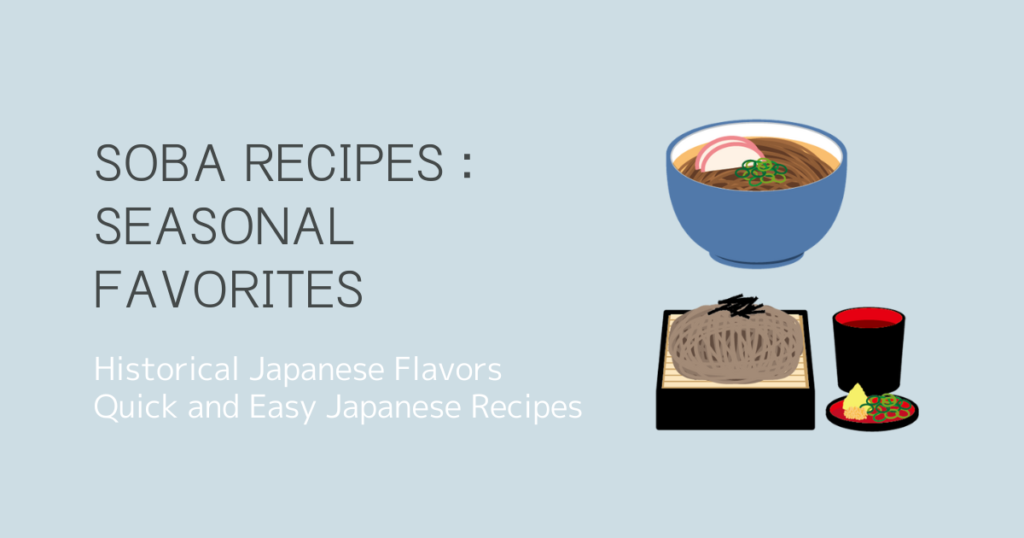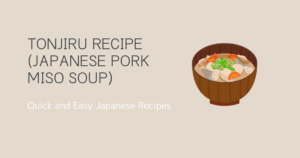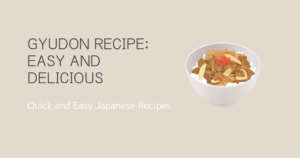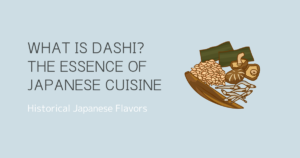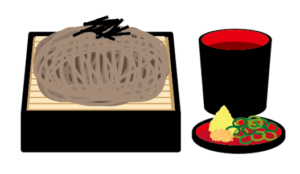
1. What is Soba?
Soba, or buckwheat noodles, is one of Japan’s most iconic and traditional dishes, enjoyed for centuries. Known for its nutty flavor and simplicity, soba can be served hot (kake soba) during winter or cold (mori soba or zaru soba) in summer, making it a versatile and beloved dish year-round.
Quick Fact:
Soba became popular during the Edo period (1603–1868), cherished by both the samurai and common people for its health benefits and ease of preparation.
2. The History and Origins of Soba
Soba’s roots trace back to Japan’s Edo period, where it gained widespread popularity as a nutritious and affordable meal. Soba shops became a common sight, serving as casual eateries for the working class. Today, the tradition of eating “toshikoshi soba” (New Year’s Eve soba) reflects the cultural significance of soba, symbolizing longevity and good fortune.
Quick Fact:
Soba contains rutin, an antioxidant that promotes better blood circulation and overall health.
3. Basic Soba Recipes
Hot Soba (Kake Soba)
A comforting dish perfect for winter evenings.
Ingredients (Serves 2):
- Dried soba noodles: 200g
- Water: 600ml
- Dashi pack (e.g., Kayanoya dashi): 1 pack
- Soy sauce: 2 tbsp
- Mirin: 2 tbsp
- Sugar: 1 tsp
- Toppings (scallions, tempura bits, etc.): Optional
Instructions:
- Boil soba noodles in a large pot of water. Save the cooking water (soba-yu).
- Rinse the noodles under cold water to remove starchiness.
- Reheat the noodles briefly in the reserved cooking water.
- Prepare the soup by simmering the dashi pack in water, then adding soy sauce, mirin, and sugar.
- Serve noodles in a bowl, pour the hot soup over, and add desired toppings.
Cold Soba (Mori Soba )
A refreshing choice for summer or light meals.
Ingredients (Serves 2):
- Dried soba noodles: 200g
- Water: 600ml
- Dashi pack (e.g., Kayanoya dashi): 1 pack
- Soy sauce: 2 tbsp
- Mirin: 2 tbsp
- Sugar: 1 tsp
- Toppings (grated daikon, nori): Optional
Instructions:
- Boil soba noodles, then rinse under cold water.
- Prepare dipping sauce by simmering dashi with soy sauce, mirin, and sugar. Let cool.
- Arrange the noodles on a plate and serve with dipping sauce and desired toppings.
4. Soba Toppings and Variations
Soba’s appeal lies in its adaptability—toppings and preparations create endless possibilities:
- Tanuki Soba: Topped with crunchy tempura bits.
- Tsukimi Soba: Featuring a raw egg (“moon-viewing soba”).
- Natto Soba: Served cold with sticky fermented soybeans.
- Oroshi Soba: With grated daikon radish.
- Kitsune Soba: Topped with sweet simmered fried tofu.
- Tempura Soba: Garnished with prawn or vegetable tempura.
- Kamo Nanban Soba: Hot soba with duck and green onions.

Our Favorite Combo:
A mix of tsukimi, natto, and tanuki toppings—even in winter, we often enjoy cold soba.
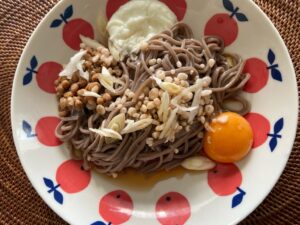
5. Soba and Japanese Culture
Soba is more than just a meal; it reflects Japan’s culinary history and cultural traditions. From nourishing samurai during the Edo period to comforting families today, soba remains a staple of Japanese cuisine. Don’t forget to enjoy “soba-yu” (the reserved cooking water), a healthy and flavorful way to end your soba meal.
6.Examples of Soba Noodles Available on Amazon for International Customers
Hakubaku Organic Soba Noodles
- Organic Japanese-style dried noodles.
- Widely distributed in Australia and the US.
- Affordable and highly rated by reviewers.
JFC Japanese Soba Noodles
- Authentic Japanese-style dried soba.
- Offered by JFC, a popular importer of Japanese foods.
Roland Soba Noodles
- Marketed as Japanese-style soba noodles.
- Reasonably priced and available in bulk packages, making it a popular choice.
King Soba Gluten-Free Buckwheat Noodles
- Gluten-free option.
- Specially made for international consumers who need gluten-free products.
Nongshim Soba Bowl
- Instant soba-style noodles in a convenient bowl.
- Simply add hot water for a quick meal.
Tips for Purchasing Soba Noodles Internationally
- Country of Origin: Many soba noodles available overseas are not made in Japan but are produced in countries like Australia or China.
- Japanese Buckwheat Label: Some products may have labels such as “Made with Japanese Buckwheat,” indicating the use of Japanese ingredients.
- Shipping Costs & Import Regulations: Be aware of potential shipping fees and import restrictions in your country before purchasing. Always check the regulations for importing food products.
This information is helpful for those seeking Japanese-style soba noodles on international e-commerce platforms like Amazon!
